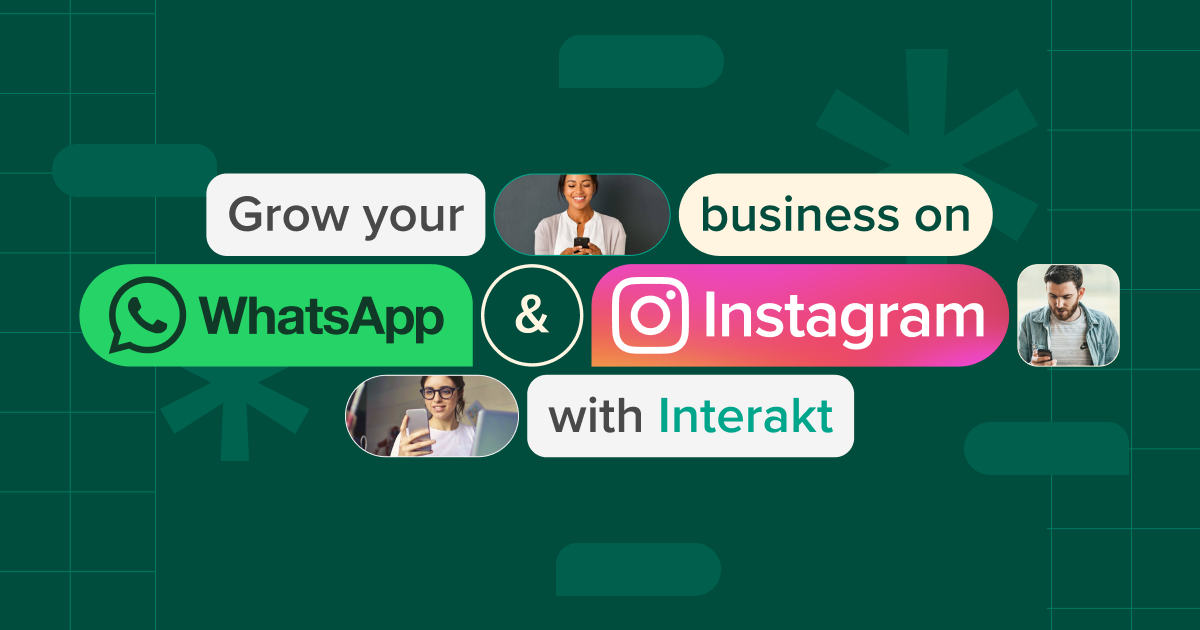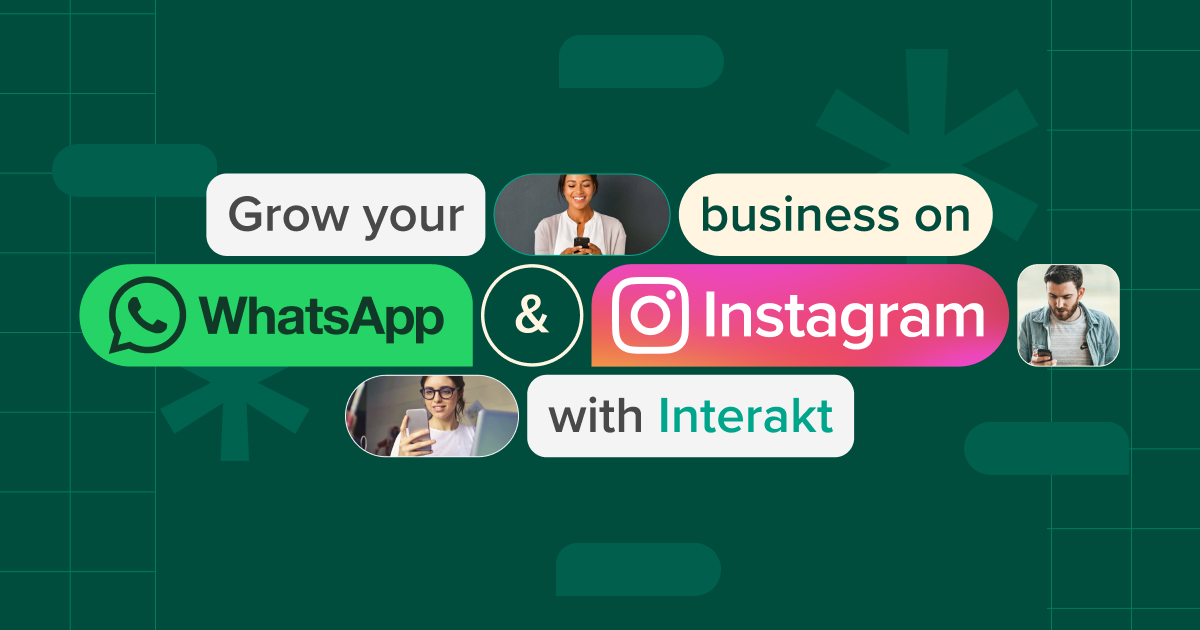A few years ago, getting an education meant sitting in a classroom. Not anymore.
Thanks to digital communication, the way students learn and interact has changed, making education accessible from anywhere. Among the host of digital platforms available today, WhatsApp stands out as a preferred choice for schools and edtech platforms.
It is chosen mostly for its widespread usage, ease of access, and real-time interaction capabilities and edtechs & schools are increasingly using WhatsApp in education to facilitate communication, student engagement, and collaboration between educators, students, and parents.
This blog explores how schools and edtech platforms are using WhatsApp Business API for education and the best practices for adoption and automation.
Benefits of WhatsApp for educational communication
Here’s why schools and edtech are relying on WhatsApp for educational communication:
Instant and direct communication
A study by Statista found that WhatsApp had over three billion unique active users globally in 2024, making it one of the most accessible communication tools worldwide. For schools and edtech platforms, this means seamless connectivity without the need for complex systems.
Real-time communication in schools is possible via WhatsApp, encouraging teachers, students, and parents to share instant updates and seek clarifications instantly.
Cost-Effective and accessible
With the steep adoption of WhatsApp across the masses, it is already a part of everyone’s lives. So, there’s no need to opt for alternative channels like SMS which come with extra charges or even costly learning management systems.
WhatsApp offers free messaging with minimal data usage making it a highly inclusive tool, even for students in regions with limited internet access.
Group messaging for collaboration
Among the vast number of learning collaboration tools, WhatsApp’s group messaging stands out. Besides one-on-one interactions, the app also has a group messaging feature that’s perfect for educators to create dedicated groups for classrooms, study sessions, and extracurricular activities.
Teachers can send announcements, share learning materials, and facilitate discussions, keeping students engaged beyond school hours.
Research by EdTech Magazine found that over 70% of students engage more actively in learning when digital communication tools are used.
Multimedia sharing
Whatsapp education benefits include multimedia sharing i.e. elements like images, PDFs, voice notes, and videos, enhancing learning and understanding. Beyond better understanding, teachers can create multisensory learning experiences for better learning retention.
Research shows that learners retain up to 65% of information when visuals are used. Teachers can share recorded lectures, educational infographics, or even quizzes, making lessons more engaging and interactive for students with different learning preferences.
Automated notifications
Just like how eCommerce organizations can automate delivery-related notifications to keep customers updated on the delivery timelines, educators can also set up automated reminders for assignments, exam dates, schedules, and school events.
This not only reduces the manual burden on educators to keep parents and students informed but also ensures no critical information is missed or misinterpreted due to human error.
WhatsApp for learning and collaboration
Here’s how schools and edtech are using WhatsApp beyond education communication, for interactive learning and teamwork:
Classroom groups
WhatsApp allows educators to create dedicated educational groups for different subjects and classes, making it easier to share resources, assignments, and important updates. This structure helps keep communication organized and students engaged with relevant coursework.
For example, a high school science teacher can create separate groups for physics, chemistry, and biology, ensuring that students receive subject-specific materials without unnecessary distractions.
Peer-to-peer learning
Students can use WhatsApp to ask questions, clarify doubts, and discuss topics in real-time, fostering a classroom-like interaction environment. Instead of waiting for the next class, they can instantly reach out to their peers or teachers for quick explanations.
For instance, in a math study group, students can work through complex problems together by sharing images, and teachers can provide feedback and detailed solutions via voice notes and PDFs.
Project-based collaboration
Projects are generally done in groups and outside of school hours. Students can collaborate offline via WhatsApp private groups that come with features like group calls and multimedia sharing for seamless coordination and communication.
For example, a group working on a history presentation can exchange research materials, divide responsibilities, provide progress updates, discuss key points or clarify doubts, and send draft slides for review all within their dedicated WhatsApp group.
WhatsApp for teacher-student engagement
Here’s how WhatsApp helps create digital classrooms for direct communication and personalized communication between educators and students:
One-on-one mentorship
Teachers can offer personalized guidance to students who need extra support via WhatsApp. It offers students a space to seek career advice, subject-related mentoring, or just simple motivation.
For example, a literature teacher can guide a student struggling with essay writing by providing real-time feedback and resources.
Homework submission & feedback
Interactive online education communication comes with engaging feedback. Rather than physical submission, students can send their assignments via WhatsApp and receive instant feedback.
For instance, students can share images of art assignment sketches, and the teacher can provide engaging feedback via voice notes.
Doubt clearing sessions
Teachers can conduct doubt-clearing sessions in the same dedicated groups, offering students a way to ask doubts and address difficulties they are encountering.
A math teacher, for instance, can address the week’s toughest algebra problems, and send a step-by-step breakdown, ensuring students grasp the concept before moving on to the next chapter.
Best practices for using WhatsApp in education
Here’s how you can make the most of WhatsApp as a tool for education:
Set clear communication guidelines
WhatsApp is accessible but can be misused by either of the parties. Highlight certain WhatsApp usage guidelines, such as chat etiquette, response times, and appropriate messaging hours. This prevents unnecessary disruptions and keeps discussions focused.
Use broadcast lists for announcements
Instead of flooding group chats with frequent updates, educators can use WhatsApp’s broadcast list feature to send announcements to multiple recipients without creating unnecessary clutter.
Maintain privacy & security
Protecting student data is essential, and educators must ensure that WhatsApp groups do not expose personal information unnecessarily. Schools should discourage sharing personal contact details and use official school accounts where possible.
Conclusion
WhatsApp is ideal for education because it enhances communication, collaboration, and remote learning.
However, to efficiently manage large-scale interactions educators must leverage automation and use personalization for student engagement.
Interakt’s WhatsApp Business API can enable automation, structured messaging, and improved communication flow, making it essential for modern educational institutions.

